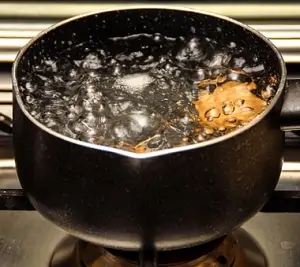Guide to Boiling Water: Why, How, and What You Need to Know
Boiling water is one of the simplest yet most effective methods for making water safe to drink and for preparing food. It’s a practice used across the world for sanitation and cooking for thousands of years. But while boiling is a great tool, it’s not a perfect solution for every situation. In this guide, we’ll explore why people boil water, its limitations, how to do it properly, additional considerations, and answer some frequently asked questions.
Why Do We Boil Water?
Boiling water serves several essential purposes, including:
- Water Purification: Boiling is effective at killing bacteria (e.g., E. coli, Salmonella), viruses (e.g., Norovirus, Hepatitis A), and parasites (e.g., Giardia, Cryptosporidium) that may be present in the water, making it safer to drink in areas with questionable water quality.
- Cooking and Food Preparation: Many recipes require boiling water to cook pasta, rice, vegetables, and more.
- Sanitization: Boiling water can be used to sterilize baby bottles, kitchen utensils, and even certain medical instruments.
- Extraction and Infusion: Many beverages, such as tea and coffee, rely on boiling water to extract flavors effectively.
- Emergency Preparedness: In the aftermath of natural disasters, boiling water is one of the easiest ways to make contaminated water safe to drink.
- Killing Harmful Algae: Boiling water from natural sources can effectively eliminate algae, including blue-green algae (cyanobacteria), as well as fungal spores that may pose risks to human and animal health if ingested.
The Limitations of Boiling Water
While boiling is highly effective for many purposes, it does have some limitations:
- Does Not Remove Chemicals: Boiling can kill biological contaminants, but it does not remove heavy metals, pesticides, or other chemical pollutants.
- Energy and Time Consumption: Boiling requires fuel or electricity and takes time, making it less convenient in emergencies where resources are limited.
- Affects Taste: Boiling can alter the taste of water, making it flat due to the loss of dissolved oxygen. Aerating the water after boiling by shaking it in a sealed container and adding a pinch of table salt can improve taste
- Not a Permanent Solution: If water is left uncovered after boiling, it can become contaminated again.
- Does Not Remove Sediment: If water contains dirt, debris, or other particulates, boiling does not eliminate them. Filtration before boiling is recommended.
How to Boil Water Properly
- Choose a Clean Pot or Kettle: Use a clean, heat-resistant container to avoid introducing new contaminants.
- Filter If Necessary: If using water from a river, lake, or another natural source, first filter out any visible dirt or debris using a cloth, coffee filter, or water filter.
- Fill with Water: Use a safe water source when available. If collecting from an untreated source, try to use the clearest water possible.
- Heat the Water: Place the container on a stove, fire, or heating element and bring it to a rolling boil.
- Boil for at Least One Minute: If you’re at an altitude above 2,000 meters (6,562 feet), boil for at least three minutes to ensure all pathogens are destroyed.
- Let It Cool: Allow the water to cool naturally before storing or drinking. Avoid adding ice or cold water from an untreated source.
- Store Safely: Keep the boiled water in a sealed, clean container to prevent recontamination.

FAQ About Boiling Water
- Does boiling water remove chlorine? Yes, boiling can help reduce chlorine levels in water, as chlorine evaporates when exposed to heat.
- Can I boil water in a microwave? Yes, but you must be extremely cautious. Water heated in a microwave can become superheated and may erupt when disturbed. It’s best to stir the water before and after heating to prevent accidents.
- How long should I boil water to kill bacteria? One minute of rolling boil is enough at lower altitudes, but at higher elevations, three minutes is recommended. This is because water boils at a lower temperature at higher altitudes due to reduced atmospheric pressure, meaning pathogens may survive unless exposed to heat for a longer duration.
- Is it safe to drink rainwater after boiling? Boiling can kill biological contaminants, but rainwater may contain pollutants that boiling won’t remove. Filtering before boiling is advisable.
- Does boiling water make it pure? Not necessarily. While boiling kills pathogens, it does not remove non-biological contaminants like heavy metals, microplastics, or certain chemicals. A combination of filtration and boiling is best for ensuring purity.